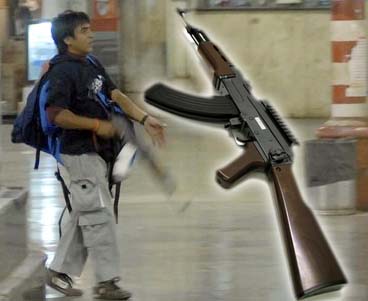Call it withdrawal of troops or redeployment, reduction in the number of security personnel in this militancy-infested region has created fear psychosis among the residents here. The recent attack on Rukhsana’s house has added to that element of fear.
It’s just 7.30 pm and an eerie silence has already engulfed the entire Bagla village. Deserted roads and pathways dotted with vacant bunkers welcome you to the village. Whether it is some crossing, a higher location or a rooftop, such bunkers and barbed wires could be seen everywhere in the village having around 35 households.
The village does not have any bus service as there is no motorable road. The area witnessed some bloodiest massacres of members of minority communities at the hands of terrorists around 7 years ago.
Bunkers were set up by the security forces to protect villagers from terrorist attacks after the villagers, especially those belonging to minority communities, started migrating.
“In 2006, when the BSF was replaced with the SOG, the militant struck a house belonging to a member of the minority community. A woman lost life and several others sustained serious injuries in the incident,” recalled Pritam Sharma. Thereafter, the security forces were again deployed in the village, he added.
“This time also villagers staged a protest in Taryaath market and 15 SOG men were deployed here. But we want the security forces back,” he added.
With the relocation of security forces from this area, people have started living indoors after the sunset. One member of almost every family keeps awake all through the night to keep vigil in the area.
A group of policemen was seen huddled up in a kutcha house. All of them were in plain clothes. None of them carried any night-vision device or looked otherwise geared up to deal with the situation, in case there was any emergency.
“A group of three militants was seen by some people around the village. So we avoid going out after the sunset and during early morning,” said Madan Lal, a villager. Madan had gunned down a militant in 2003 and was a member of the village defence committee.
“Earlier, the villagers used to provide shelter to the security forces and did not charge anything for the service. We used to feel secure in the company of security personnel. We want them back,” Madan added. “Our village is a crossing point for militants. They have killed many people here. Troops have also been shifted from Daggal, Taleri, Tararu, Solki, Taryaath, and Kabakote villages and people in the area are living in the fear of terrorists,” said a group of villagers.
http://www.tribuneindia.com/2009/20091107/j&k.htm#5
 Mohammed Ajmal Amir Kasab and nine other suspected Lashkar-e-Tayyeba (LeT) militants left on
Mohammed Ajmal Amir Kasab and nine other suspected Lashkar-e-Tayyeba (LeT) militants left on 